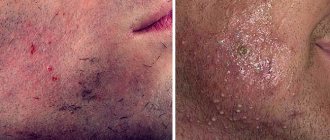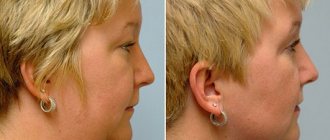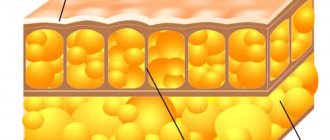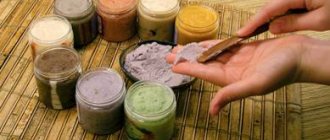Today, the main task of pharmaceutical and cosmetology laboratories is the development and synthesis of the most significant and effective substances that can be used to create effective products to solve current problems. One of these substances that is actively, but still cautiously, used for the preparation of a wide variety of pharmaceutical and cosmetology products is arbutin. At the moment, the substance is surrounded by close attention, since experiments, tests and quality tests are just being carried out, the results of which are not yet fully known.
- Beneficial properties of arbutin
- Use of the substance in cosmetics
- What is it used for in medicine?
- Where is arbutin found: sources
- Harm and contraindications for use
- Review of cosmetics with arbutin
- Roland Face cream with arbutin and placenta
- Hana Lightening Lotion for Pigment Spots
- Anti-Melasma Serum
- Himalaya Herbals Whitening Cream
Beneficial properties of arbutin
Arbutin is a natural component that is obtained by performing a series of chemical reactions with plants (bearberry, lingonberry, mulberry or bergenia).
The structure of the molecule is a glycoside, an ether. This component is actively used in products intended to lighten the skin, as the safest and most gentle product. Arbutin is non-carcinogenic and non-toxic. The component has a lot of useful properties, including:
- reduction of melanin synthesis for problems with skin hyperpigmentation;
- when exposed to an alkaline environment, arbutin has an astringent and antiseptic effect, transforming into hydroquinone;
- soothes and softens mucous membranes;
- eliminates fluid retention in the body.
Considering the properties and effect of the substance on the body, it is not surprising that plants containing it are used to treat diseases of the digestive and excretory systems.
What is arbutin?
Arbutin is a compound obtained from plant leaves. For example, lingonberries, bearberries, blueberries. It takes a lot of effort to obtain arbutin. The first step is boiling the leaves in water. The second is the addition of lead to the decoction, due to which the tannins released from the plants settle to the bottom. It is in this sediment that arbutin is contained.
Important
As is known, lead in cosmetics is not safe (it tends to accumulate in body tissues and can negatively affect the female reproductive system, immunity, interfere with the absorption of vitamins, lead to the development of caries and brittle bones).
In the third stage, hydrogen sulfide is used to separate arbutin crystals from lead and other unnecessary substances. At the last, fourth stage of arbutin production, its final purification is carried out using activated carbon and water. As a result, employees of cosmetic companies have crystals with long and thin spikes that dissolve well in warm liquids.
Arbutin production is established in different countries of the world. Most of it is produced in China. But there is also European and Russian arbutin.
Use of the substance in cosmetics
Arbutin is used in cosmetics as a substitute for pure hydroquinone due to the fact that it does not contain toxic components. Its main purpose is to reduce skin pigmentation. The mechanism of operation of the component is as follows: it penetrates the body and partially suppresses the production of the enzyme that is responsible for the synthesis of melanin. Thus, the level of production of the latter decreases, and age spots, freckles, and other changes in skin color are noticeably lightened.
There are subtleties in using this component in creams, since if the dose is exceeded, it can provoke the opposite effect - stimulate hyperpigmentation. Accurate data on the beneficial dosage have not yet been obtained, so arbutin is added in small quantities (usually from 2 to 4% of the total components), which means that its effect is not pronounced, but the presence of results cannot be denied. Often in skin care products it can be found in combination with various plant extracts, hyaluronic acid and vitamin C. The substance can also be effectively used in hair dyes, which is currently permitted.
In addition to the whitening effect, arbutin is also able to protect the skin from harmful ultraviolet radiation, increase the level of local immunity, have an anti-inflammatory effect and reduce the intensity of pain. Creams that are produced with this component are usually applied twice a day - morning and evening.
Also in cosmetics you can find a derivative of this substance - alpha-arbutin, which has more active properties and is widely used mainly in Japanese cosmetic products.
Application in urology
Teosial Redensity features of use in cosmetology
Arbutins are the most powerful natural antiseptics. Under their influence, there are significantly fewer pathogens of urological infections
Their bactericidal properties are expressed in relation to gram-positive coccal bacteria and, most importantly, to gram-negative bacteria. After all, most often urological diseases are caused by gram-negative flora, which are very resistant to the action of most of the used uroseptics and antibiotics
The undoubted advantage of arbutin is its selectivity. Its antimicrobial properties appear only in relation to pathogenic ones, i.e. disease-causing microorganisms, while bacteria beneficial to the body do not undergo changes, and the microflora remains normal.
The therapeutic effect of arbutin is based on the bactericidal and diuretic properties of hydroquinone, formed in the body as a result of the hydrolysis of arbutin. Preparations containing arbutin are widely used in medicine to cure urolithiasis, prostatitis, pyelonephritis, cystitis, gastritis with reduced secretion, diarrhea, gout, etc.
What is it used for in medicine?
In medical circles, research is constantly being conducted to find the safest components for humans for the manufacture of medicines. Studies are also being conducted regarding the effect of arbutin and the advisability of its use. The most common purpose of using this component is to achieve a diuretic effect. The advantage of the substance is that, unlike other diuretics, it has a list of additional beneficial effects, namely anti-inflammatory, antimicrobial and antioxidant properties.
Alpha arbutin cream
If a more powerful brightening agent is needed, you should consider using alpha-arbutin for whitening. It is purer and 10 times more effective than natural beta-arbutin.
Some of the best such creams are:
- DHC Alpha-Arbutin Whitening Cream
- Arbutin Intense Whitening Cream from superskin
- Alpha Arbutin skin care cream formula
- Ageless Derma Face Cream by Dr. Mostamand face cream for dark spots
- Alpha arbutin whitening cream from Skinmedic
No matter if you are in India, Thailand, Pakistan and other countries, you can get most of these products from online stores like Amazon, eBay, etc. It is worth reading reviews about the product you choose before purchasing.
Side effects
The side effects of this lab-synthesized product are expected to be similar to those of natural beta-arbutin. However, being slightly different (it has alpha glycosidic glucose bonds) its effects may also be slightly different. Again, no studies have been conducted for any side effects of this product.
Harm and contraindications for use
The main contraindication to the use of drugs with arbutin is the presence of individual intolerance, the possibility of which exists for all components of plant origin, and too dark skin. According to research, when using the component on too dark skin, there is a high probability of a reverse reaction of the formation of black pigmentation.
Despite the fact that contraindications to the use of products with arbutin are minimal, the substance still leaves a number of questions regarding its safety, since it is still a type of hydroquinone.
Direct harm from the use of products with such a component can only occur if the dose is significantly exceeded. It is believed that the component, under certain conditions, can even provoke the appearance of malignant tumors.
Negative Impact
In addition to benefits, any substance can also cause harm. Arbutin is no exception. There are also contraindications for the use of this remedy. Hydroquinone, which is the main component of arbutin, is a toxic substance. Despite the fact that the composition also contains glucose, which makes arbutin less toxic, there is no evidence of its non-toxicity yet. Therefore, only 2% arbutin content is considered safe for the skin. In some cases, an allergic reaction may occur. In this case, it is necessary to completely avoid products containing arbutin.
Review of cosmetics with arbutin
Today, there is a large variety of creams, serums, lotions and other cosmetics that contain arbutin. Moreover, depending on the amount of the substance in the preparation, one can judge not only its quality and effectiveness, but also its safety, since exceeding the standards for the inclusion of arbutin in a cosmetic product leads to negative consequences. For this reason, below is a list of the highest quality, natural, effective and safe products that can be found on the domestic market and purchased at any pharmacy in the country.
Roland Face cream with arbutin and placenta
The described cream is a high-quality product used for the care of facial skin of all types. The main active ingredients contained in the cream are arbutin and placenta extract. The product is sold in a small pink jar with a volume of 180 grams. It should be noted that the composition of the cream is quickly and completely absorbed into the skin without leaving an unpleasant greasy layer or a filmy feeling on the face. The Japanese manufacturer claims that the product contains all the necessary properties of milk, cream, and lotion, providing effective and gentle skin care. At the same time, the cosmetic product is rich in polyunsaturated fatty acids, vitamins and other substances necessary for the dermis.
Hana Lightening Lotion for Pigment Spots
This product is an effective moisturizing and brightening cream-lotion made in Japan. The product is made based on arbutin and hyaluronic acid and is sold in a small bottle with a capacity of 10 milliliters. At the same time, the product is enough for a long period of use when applying the composition to the skin of the face twice a day. The cosmetic product has a wide range of actions, allowing you not only to even out skin tone, but also to effectively saturate the skin with all the necessary vitamins and microcomponents. The complex of cosmetic elements is optimal for daily use, regardless of skin condition and type.
Anti-Melasma Serum
The cosmetic drug Anti-Melasma is a serum used for the care and correction of problematic and sensitive facial skin. The drug is great for both women and men who want to get rid of inflammatory processes on the face. One of the most important elements contained in the serum is arbutin, due to which the skin color evens out and becomes more uniform after just a few uses of the composition. The product has a light texture and is well absorbed into the skin, leaving no traces or unpleasant sensations.
Himalaya Herbals Whitening Cream
The described cosmetic product is a whitening cream that can be used for all skin types, regardless of age.
A special feature of the product is that it contains only natural ingredients and extracts, including rose oil, walnut oil, mandarin oil, aloe oil, etc. The consistency of the product is light, non-greasy, easily absorbed into the skin, and has no unpleasant odor. The product effectively brightens the skin, evening out its color, without having a negative effect on the body. ( 1 ratings, average: 5.00 out of 5)
Arbutin
Although arbutin (a β-glucoside of hydroquinone) is found in many higher plants, nothing is known about the degradation of hydroquinone by bacteria. None of the published studies on the breakdown of phloroglucinol, a rare component of higher plants, demonstrates the formation of the A ring of flavonoids from it. A large amount of flavonoids enters the soil, but since they do not accumulate here, we can assume the existence of soil microorganisms capable of breaking the phloroglucinol ring.
Phenolic glycosides, such as arbutin, have antimicrobial and diuretic activity. The glycoside salidroside, first isolated from willow bark and later discovered in the rhizomes and roots of Rhodiola rosea, has a stimulating and adaggogenic effect.
The first group includes arbutin, contained in the leaves of bearberry, lingonberry and bergenia. Along with arbutin, these plants contain methyl arbutin.
If you add 1 drop of a highly diluted ferric chloride solution to an aqueous solution of arbutin (1:50), the mixture turns blue. When arbutin is heated with dilute sulfuric acid (2 - J-1) and manganese peroxide, the odor of quinone appears. When arbutin is heated with Fehling's solution or a solution of silver nitrate, no reduction occurs, but if arbutin is first boiled with diluted sulfuric acid, then the resulting solution (due to the content of glucose and hydroquinone) when heated will cause immediate reduction of the silver or copper solutions. An ammonia solution of silver is reduced by arbutin upon prolonged heating.
The mixture turns blue in the presence of arbutin, dark violet with floridzin, blue with esculin, which then turns green, hesperidin with light violet, and quercitrin with dark green color. Based on these colors, we can draw a conclusion about the nature of the phenol that is part of the glycoside: arbutin, which gives a blue color, belongs to the hydroquinone series, quercitrin, which gives a green color, belongs to the pyrocatechol series. With some glycosides the reaction proceeds more clearly if alcohol solutions of ferric chloride (III) are used; Frangulin with this reagent turns brownish-red, barbaloin and nataloin - brownish-green.
Grisdale and Tower found that arbutin (Fig. 19) was readily synthesized in vacuum-infiltrated discs of young Pyrus communis leaves with C14-labeled precursors, but not in mature leaf discs.
| Some aromatic compounds, the synthesis of which probably occurs through. |
In Grevillea robusta, labeled phenylalanine is also converted to arbutin.
As an example of the structure of a glycoside, the structural formula of arbutin, found in bearberry leaves, is given below, and a diagram of its breakdown into glucose and the aglycone hydroquinone is given.
The leaves of Uva ursi and Vitis idaea plants contain arbutin, methylarbutin and hydroquinone.
It occurs naturally in some plants in the form of arbutin glucoside.
Other aromatic hydroxy compounds, such as phenol, resorcinol, orsin and arbutin, do not react.
A mixture of 0 2 g of the studied ground plant material containing 0 2 - 0 8 mg of arbutin and 0 1 g of CaCO3 (to neutralize organic acids) is boiled for 30 minutes with 30 ml of water and filtered. Extraction with water - repeat 2 more times. 5 ml of a 4% solution of lead acetate is added to the filtrates and, after cooling, diluted with water to a volume of 100 ml. The resulting liquid is filtered, 0.2 g of Na2HPO4 - 2H2O is dissolved in it and, after shaking, filtered again to remove calcium and lead salts. Mix 10 ml of the filtrate with 10 ml of a 10% ammonia solution, add 5 ml of the reagent and after 20 minutes measure the optical density using a green filter.
When the leaves of the above plants are infused with water, arbutin and arbutase go into solution and the arbutase enzyme breaks down arbutin into glucose and hydroquinone. Decomposition products can be detected by special reactions.
With the exception of cardiac glycosides and rutin, other representatives, such as amygdalin (I), arbutin (IV), oxyanthraquinone glycosides containing aglycones (chrysophanic acid (VII), aloemodin (VIII), frangulaemodin (IX), glucosides, containing a sulfur atom in the molecule (sinigrin, p.
Soap
If you do not prefer creams and serums, you can also choose soap with arbutin. These are whitening or lightening soaps that contain arbutin as the main lightening active ingredient. However, you can find soaps with other active lightening ingredients such as glutathione and kojik.
Advantages
They will help create an even skin tone, brighten your skin, reduce the appearance of dark spots, reduce hyperpigmentation, melasma, age spots, liver spots, sunburn and allergic inflammation.
Secondly, compared to soaps with kojic acid or glutathione, arbutin is ideal for all skin types, including sensitive ones, as it is a gentle brightening active without being overly drying. However, using a good moisturizer is recommended.
For example, Papaya Kojic Kojic Acid Soap can also be used for sensitive skin but needs to be washed off after 30 seconds, unlike Arbutin Soap which can be left on for three minutes.
The best soap
It is worth noting the fact that there are not many brands on the market. Some of the good brands that can be found include:
- Alpha Arbutin Double White Soap – skin lightening from Dee Thailand laboratory
- Alpha Arbutin AHA 80% – whitening pineapple soap from Sabu
- Soap with arbutin Professional Skin Care Formula from
Let us briefly consider only Alpha Arbutin double white soap from the Dee Thailand laboratory.
Alpha and beta arbutin: properties and differences
When D-glucose enters into a bond with a hydroquinone molecule, a two-phase formation of arbutin occurs: with alpha and beta glycosidic bonds. Beta-arbutin is naturally occurring and is extracted from bearberry, while alpha-arbutin is obtained exclusively in the laboratory.
Pure powder product alpha-arbutin has a higher cost and better efficiency, which is often justified by many manufacturers for high prices for cosmetic products. Differences in the way D-glucose binds explain the difference in the influence of alpha and beta groups on melanin synthesis.
Alpha-arbutin is a rather expensive component and can block the process of biosynthesis of epidermal melanin. Based on the results of numerous clinical studies, it was found that beta-arbutin has a milder effect, so the effectiveness of its use is several times lower.
Whitening soap
Arbutin (why this component is included in cosmetic products can be read on the packaging of some products) is often used in the manufacture of soap, which can also be used to get rid of:
- age spots;
- freckles;
- traces of rashes.
The most effective products include the following products:
- Medical facial soap Dr Yanhee Soap made in Thailand. In addition to arbutin, the composition includes additional active components: collagen, vitamin C and natural papaya enzyme. Has a whitening effect, eliminates pigmentation, acne and evens out facial tone.
- Madame Heng natural soap cleanses the skin well and gently whitens it. Thanks to the presence of vitamins, amino acids and plant extracts, the soap relieves inflammation, helps to narrow pores, and evens out the tone and structure of the skin.
- Lab Dee alpha arbutin soap. The product is produced in Thailand and is intended to even out the complexion and get rid of dark spots. The natural ingredients that make up the soap have a gentle effect: the skin is not overdried, deeply cleansed, and has an even tone without pigmentation.
More often, soap is suggested to be used in conjunction with other skin lightening products: the skin is first cleansed using a special soap with the addition of arbutin, and then a cream, serum or lotion is applied.
Serum
They have gained popularity over the past few years. Serums typically have a higher concentration of active ingredient and are more expensive because they are a stronger skin whitening agent.
Most serums available are made with alpha-arbutin, which is produced in a laboratory, rather than beta-arbutin, which is extracted from plants.
- Himistry Evens Skin Tone Arbutin Serum
- Superskin Skin Whitening Serum with Arbutin
- Labdee Thailand, pure serum from Chadamyi
- Alpha Arbutin Pure Serum 100% Switzerland for skin lightening from Lab Dee Thailand.
Again, these can be found at most leading online beauty stores. It's worth reading reviews before purchasing these products to help you avoid fake products.
How is arbutin used in gynecology for women?
Arbutin (why and how it is used in medicine will be described below) has various beneficial properties that can be important not only in the field of cosmetology. It is for this reason that the substance is used in the creation of drugs. Arbutin is one of the constituent components of hogweed, a perennial herb often called female.
In the field of gynecology, the benefits of using the substance are explained by its numerous properties.
The table provides a brief summary of diseases for which products with arbutin will be especially useful:
| Basic properties | Diseases |
| Diuretic |
|
| Anti-inflammatory | |
| Antibacterial |
Borovaya uterus, which contains arbutin, helps normalize hormonal levels and restore the menstrual cycle.
Natural Sources of Arbutin
The plant origin of arbutin allows it to be considered a natural ingredient.
The substance is contained in the leaves of such plants:
- bearberry;
- Caucasian blueberries;
- wintergreen;
- cowberry;
- mulberry;
- bergenia.
The younger the plant, the greater the amount of arbutin it will contain. To obtain the substance, plant leaves should be boiled in water, and then tannins should be precipitated from the resulting mixture.
After evaporation, the substance is formed in crystalline form, in which silky needles are formed . After processing it using activated carbon, a component is obtained, which will then be added to skin whitening products.










